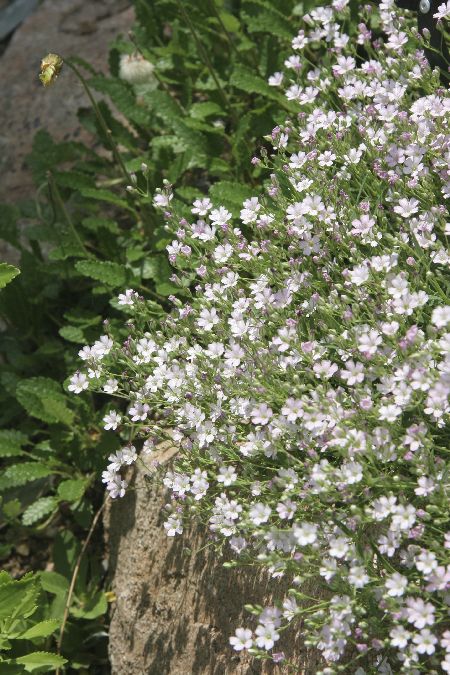
Gypsophila paniculata
Baby's Breath
Large loose clusters of small, white to pink flowers blanket Baby's Breath during summer. 'Bristol Fairy' is an improved selection. Canopy coverage: 7 square feet.
[Read More]Helenium autumnale
Sneezeweed
The "sneeze" part of the name Sneezeweed is due to its ages-old use as a snuff, not allergenic pollen. Tall growing, place at the back of the border. Daisylike flowers are yellow but sometimes take on a bronzy hue. Plant parts are poisonous. Canopy coverage: 3 square feet.
[Read More]Helianthemum cultivars
Sun Rose
Sun Rose has multiple uses in the landscape: as a shrubby perennial, summer color plant and groundcover. Flowers come in many colors. Prune dead branches to renew in late winter to early spring. Be ready to protect plants during winter in cold regions. Canopy coverage: 3 square feet.
[Read More]Helianthus maximilianii
Maximilian Sunflower
Maximilian Sunflower is a perennial typically grown as an annual. Start from seeds in the spring. It grows quite tall, to 6 feet or more, so place at back of plantings or border. Produces profuse numbers of daisylike flowers up to 3 inches across. Canopy coverage: 3 square feet.
[Read More]Hemerocallis hybrids
Daylily
Daylilies are available in a wide range of plant forms and types, from evergreen, semievergreen or deciduous. Flower colors and sizes are available in selections too numerous to mention. Check locally. Canopy coverage: 7 square feet.
[Read More]Heuchera sanguinea
Coral Bells
Flowers of Coral Bells bloom above leaves on delicate spikes. It's a good, low-growing understory plant, particularly for a woodland effect. In addition to this species, there are many improved selections available in a range of leaf and flower colors. Check locally. Canopy coverage: 1 square foot.
[Read More]Hibiscus moscheutos
Rose Mallow
Rose Mallow is a shrubby perennial that can reach up to a towering 8 feet high. However, most hybrids fall into the 4-foot-high range. Very large flowers up to 12 inches across in a range of bright colors is a primary attraction. Dies to the ground in winter. Canopy coverage: 13 square feet.
[Read More]Hosta cultivars
Hosta, Plantain Lily
Hostas are primarily grown for the brilliant colors of their leaves. They are ideal in shady and partially shady locations beneath shrubs and trees. Hundreds of selections are available in a range of sizes. Canopy coverage: 7 to 20 square feet.
[Read More]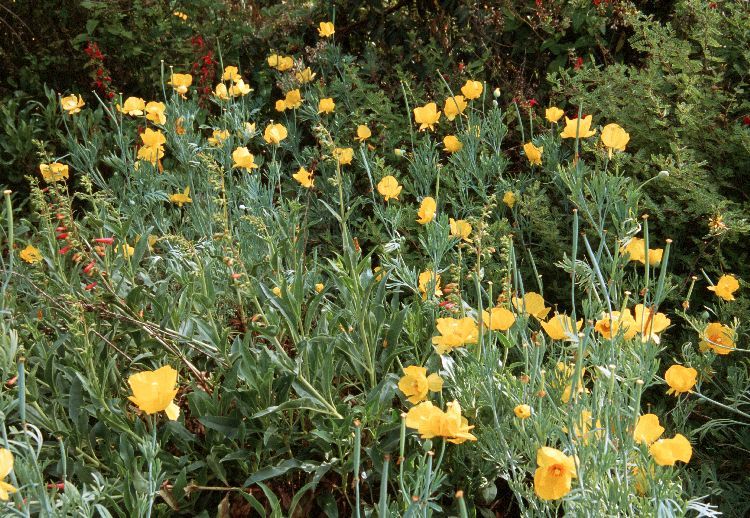
Hunnemannia fumariifolia
Mexican Tulip Poppy, Goldencup
This is a shortlived perennial, lasting maybe three years, but it does grow fast and reseeds on it own. Requires soil with good drainage. Feathery foliage looks much like that of California Poppy, a relative. Flowers are large—up to 3 inches across—and are a eye-catching, rich yellow with orange stamens. Mass plant for a dramatic show. Canopy coverage: 3 square feet.
[Read More]Iberis sempervirens
Evergreen Candytuft
Easy-to-grow perennial or groundcover. Flowers are profuse and pure white. Lower-growing, more compact selections are available, such as 'Snowflake' and 'Alexander's White'. Canopy coverage: 3 square feet.
[Read More]Impatiens species
Impatiens
Impatiens are the go-to choice for color in the shade, even full shade. Can be grown as a perennial in frost-free regions, but usually grown as a bedding plant annual. Set out from nursery packs or containers in spring.
[Read More]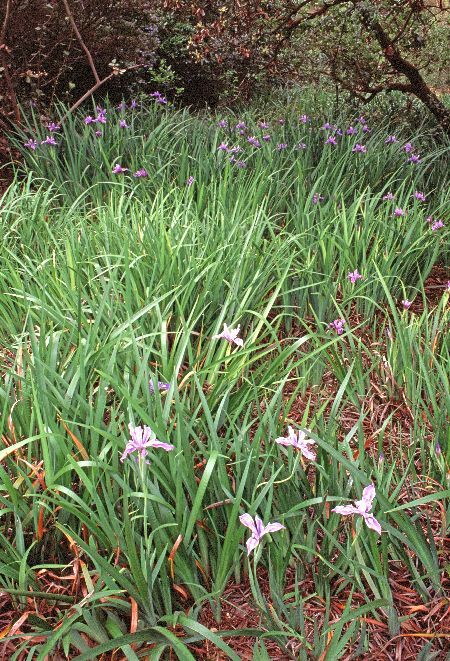
Iris douglasiana
Douglas Iris
Douglas Iris is one of the more forgiving Iris grown in the West. Vigorous growing, it accepts a range of exposures, from sun to shade. As typical of many California natives, accepts more sun near the coast, then less as one moves inland. Long (1 to 3 feet), narrow, sword-shaped leaves adorn plants. Not fussy as to water except avoid soggy soils. Canopy coverage: 3 square feet.
[Read More]Keckiella antirrhinoides
Yellow Bush Snapdragon, Yellow Bush Penstemon
An arching, evergreen shrub that goes drought deciduous (drops leaves) during dry summers. Plant in well draining soil; water only occasionally in summer. Flowers are large, to 4 inches long, fragrant, and attract many forms of wildlife. Canopy coverage: 7 square feet.
[Read More]Kniphofia uvaria
Red-Hot Poker
Red-hot Poker has an upright, clumping form. Dramatic flowers change color as they age: Blooms are first red then mature to yellow, making the tall flower stalks a two-toned affair. Hybrids are available in a range of colors. It doesn't like "wet feet" so provide with well-drained soil and don't overwater. Canopy coverage: 7 square feet.
[Read More]Lamium maculatum
Dead Nettle
A good choice for a shady location. Especially effective when "lighting up" a shadowy border due to its light colored foliage and flowers. Remains evergreen in mild climates. Canopy coverage: 7 square feet.
[Read More]Lantana 'New Gold'
New Gold Lantana
Tireless bloomer with flowers spring, summer, fall and winter in frost-free climates. Foliage may cause skin irritation. Canopy coverage: 7 square feet.
[Read More]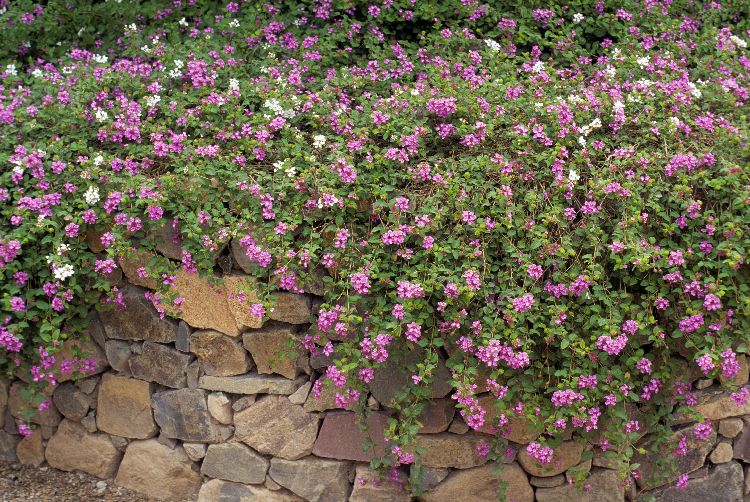
Lantana montevidensis
Trailing Lantana
Lantana has a long blooming season—spring into fall where winters are mild. Excellent groundcover or allow to drape over a ledge or large container. Canopy coverage: 7 square feet.
[Read More]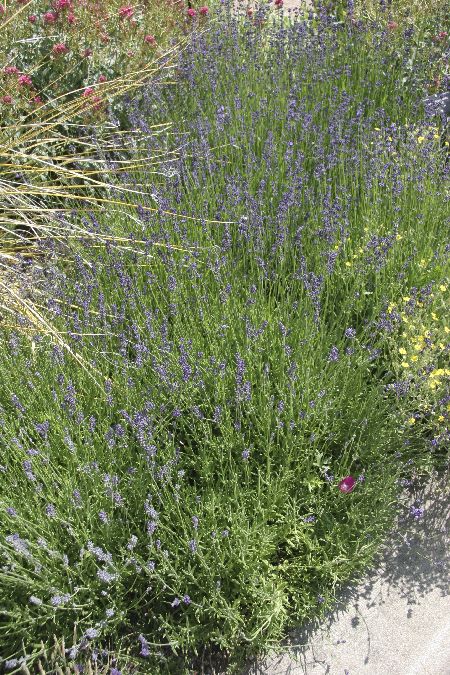
Lavandula angustifolia 'Munstead'
English Lavender
English Lavender is the most common Lavender and considered to be one of the easiest to grow. Flowers are highly fragrant. The species is shrublike and reaches 3 feet high and as wide. 'Munstead' is a dwarf form that grows to 1-1/2 feet high and as wide. Also look for 'Hidcote', with deep purple flowers. Canopy coverage: 3 square feet.
[Read More]Lavandula dentata
French Lavender
You can identify this lavender by its square-toothed leaves. Flowers of French Lavender are typically short and lavender-purple in color. Flowers bloom for a long period in mild-winter regions. Canopy coverage: 7 square feet.
[Read More]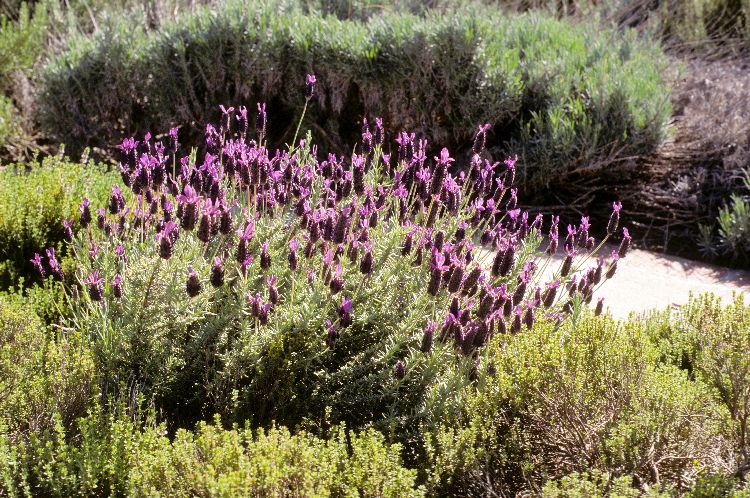
Lavandula stoechas
Spanish Lavender
Spanish Lavender is the most heat-tolerant lavender but prefers some afternoon shade in hot-summer regions. Both flowers and foliage emit the appealing lavender scent, especially when brushed or bruised. Canopy coverage: 7 square feet.
[Read More]Lavandula x intermedia 'Grosso'
Blue Lavandin
This lavender is a hybrid between two Lavender species. Form is more mounding and with branching stems compared to other species. A heat-tolerant selection. 'Grosso' is highly fragrant, and is widely grown commercially in France. Canopy coverage: 7 square feet.
[Read More]